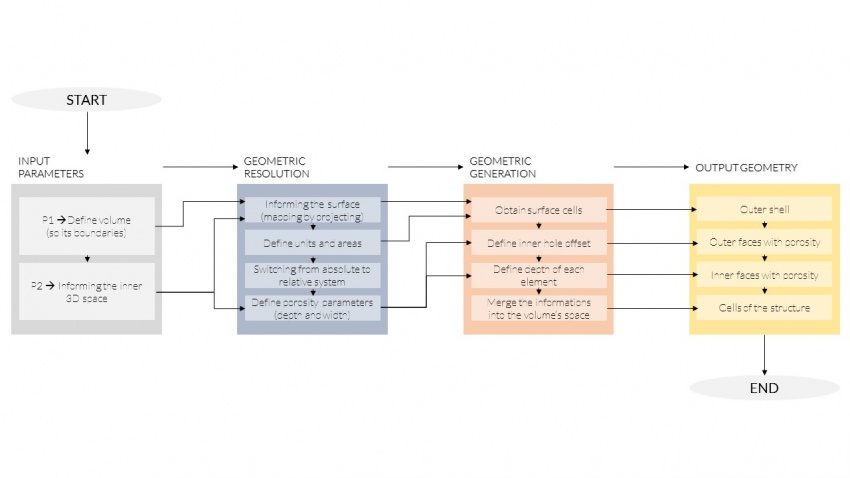Difference between revisions of "Msc1G2:Workshop11"
From rbse
(Created page with " __NOTOC__ __NOTITLE__ ==Andrea Fusaro== <div style="height:30px; width: 850px; margin:0px; padding: 0px; padding-top: 20px; border: 0px;"> <div style="float:left; width: 12...") |
|||
| (12 intermediate revisions by one user not shown) | |||
| Line 17: | Line 17: | ||
<div style="float:left; width: 120px; height 30px; border: 1px solid #aaa; margin-right:10px;" align="center">[[Msc1G2:workshop15|'''W5 ''']]</div> | <div style="float:left; width: 120px; height 30px; border: 1px solid #aaa; margin-right:10px;" align="center">[[Msc1G2:workshop15|'''W5 ''']]</div> | ||
</div> | </div> | ||
| + | |||
| + | <br> | ||
| + | <br> | ||
| + | The aim of the project is to inform, starting from a volume and a collection of points in it, the volume’s surface in order to achieve a characterization of the porosity both in the tangential and perpendicular directions. | ||
| + | <br> | ||
| + | <br> | ||
| + | First of all, the volume is defined and filled with a cloud of points, so that any of them finds a corrisponding on the surface of it: the mapping will allow to obtain a multitude of planar surfaces. | ||
| + | <br> | ||
| + | <br> | ||
| + | Then every unit gets a unique percentage of porosity defined by its area so that the structure is kept in the perimeter. Finally, dependently by the porosity, the depth of those units is determined. | ||
| + | |||
| + | [[File:WK2AFCHART.JPG|850px]] | ||
| + | <br> | ||
| + | <br> | ||
| + | [[File:WK2AGRASS.jpg|850px]] | ||
| + | <br> | ||
| + | <br> | ||
| + | <br> | ||
| + | <br> | ||
| + | <br> | ||
| + | <br> | ||
| + | <br> | ||
| + | <br> | ||
| + | [[File:WK2APIC2s.jpg|850px]] | ||
| + | <br> | ||
| + | <br> | ||
| + | [[File:WK2APIC1s.jpg|850px]] | ||
Latest revision as of 14:57, 17 October 2016
Andrea Fusaro
The aim of the project is to inform, starting from a volume and a collection of points in it, the volume’s surface in order to achieve a characterization of the porosity both in the tangential and perpendicular directions.
First of all, the volume is defined and filled with a cloud of points, so that any of them finds a corrisponding on the surface of it: the mapping will allow to obtain a multitude of planar surfaces.
Then every unit gets a unique percentage of porosity defined by its area so that the structure is kept in the perimeter. Finally, dependently by the porosity, the depth of those units is determined.



